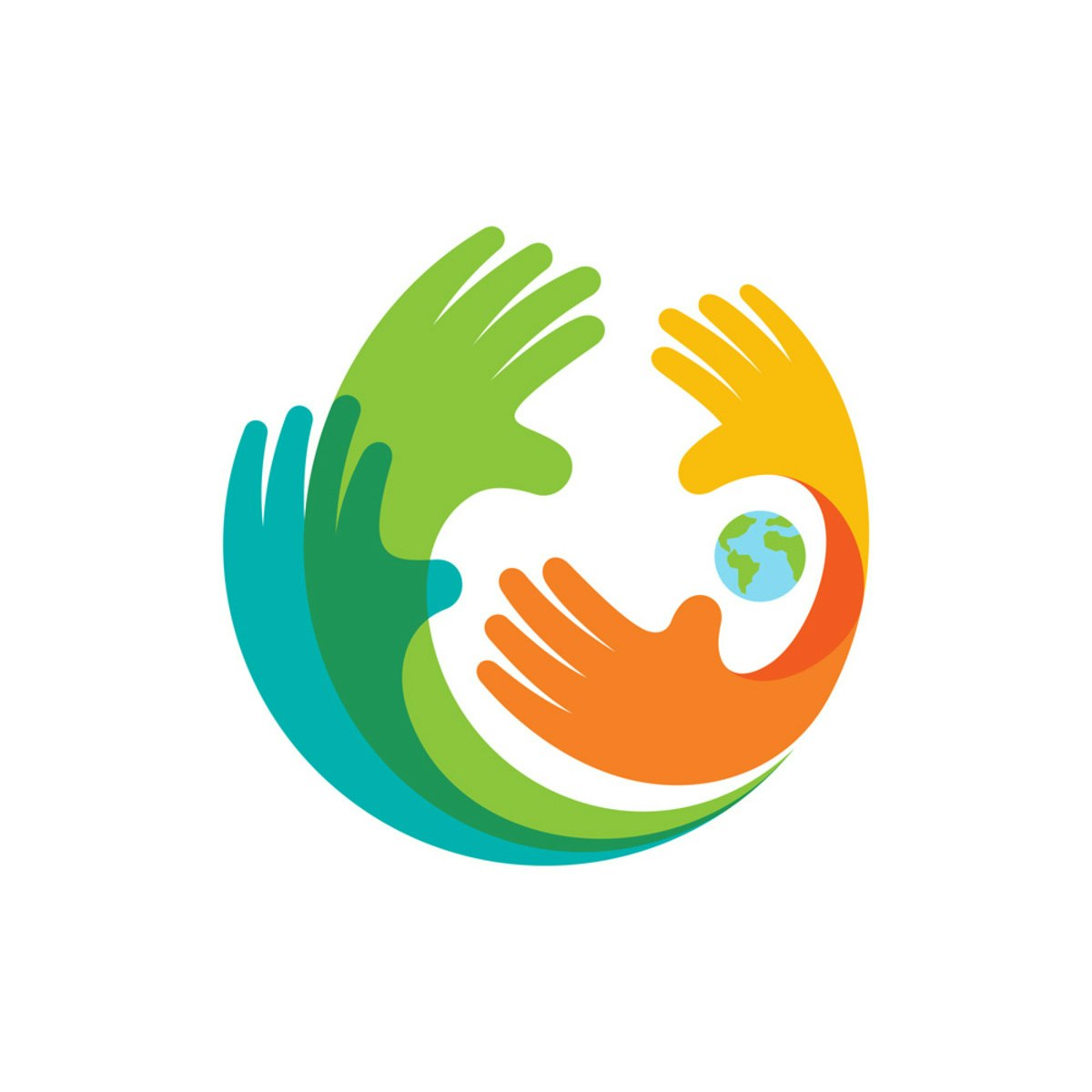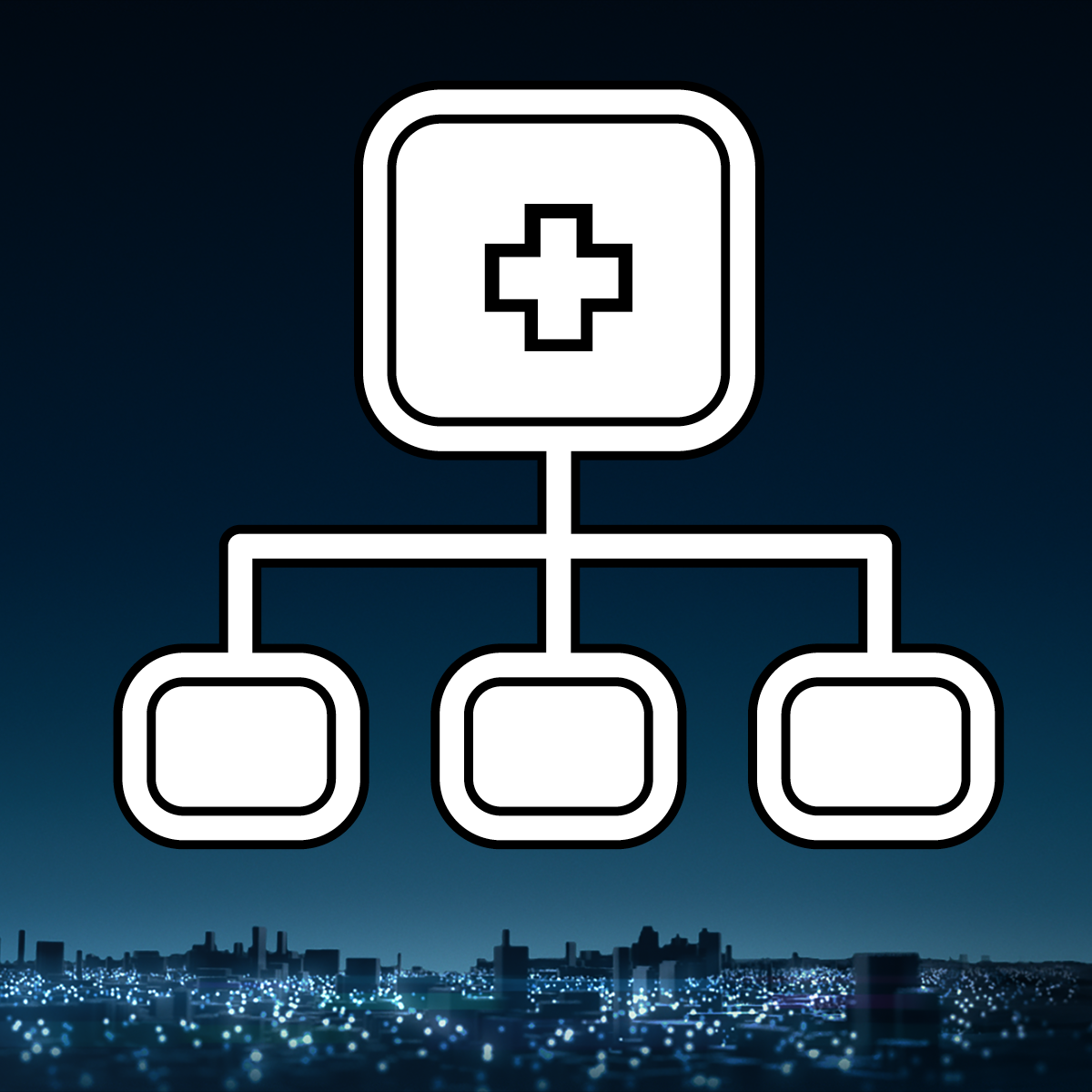Social Determinants of Health
derstanding Social Determinants of Health: A Comprehensive Guide
Social Determinants of Health, often abbreviated as SDOH, refer to the non-medical factors that influence health outcomes. These are the conditions in which people are born, grow, live, work, and age, and the wider set of forces and systems shaping the conditions of daily life. These forces and systems include economic policies and systems, development agendas, social norms, social policies, and political systems. Essentially, SDOH encompasses the multifaceted conditions that affect a wide range of health, functioning, and quality-of-life outcomes and risks.
Working in the field of Social Determinants of Health can be deeply engaging as it allows individuals to contribute to a more equitable and healthier society. Professionals in this area often find fulfillment in identifying and addressing the root causes of health disparities, moving beyond treating illness to creating conditions that foster well-being for entire communities. The interdisciplinary nature of SDOH also offers exciting opportunities to collaborate with diverse stakeholders, from policymakers and community leaders to healthcare providers and researchers, to develop innovative solutions. Furthermore, the growing recognition of SDOH's importance means that this field is dynamic and evolving, presenting continuous learning and impact prospects.
Introduction to Social Determinants of Health
This section aims to provide a foundational understanding of Social Determinants of Health, making it accessible for those new to the concept while also providing a solid grounding in its academic rigor. We will explore what SDOH entails, how the concept has developed over time, key organizations involved, and its relevance across the globe.
Definition and scope of Social Determinants of Health (SDOH)
Social Determinants of Health (SDOH) are the conditions in the environments where people are born, live, learn, work, play, worship, and age that affect a wide range of health, functioning, and quality-of-life outcomes and risks. These non-medical factors can have a more significant impact on health than genetics or access to healthcare services. Examples of SDOH include socioeconomic status, education, neighborhood and physical environment, employment, and social support networks, as well as access to healthcare.
The scope of SDOH is broad, encompassing a multitude of interconnected factors. These determinants can create disparities in health outcomes, leading to health inequities – unfair and avoidable differences in health status seen within and between countries or population groups. Addressing SDOH is crucial for improving population health and achieving health equity, which means ensuring everyone has a fair opportunity to attain their full health potential.
Understanding SDOH involves looking "upstream" at the underlying causes of health issues, rather than solely focusing on individual behaviors or medical treatments. This means considering the systems and structures that shape people's opportunities and resources, such as economic policies, social norms, and political systems. By tackling these root causes, interventions can have a more profound and lasting impact on health outcomes.
These courses offer an introduction to the fundamental concepts of SDOH and population health.
Historical evolution of the concept
The understanding that social conditions impact health is not new. Early public health reformers in the 19th century recognized the links between poverty, poor sanitation, and disease. Thinkers and physicians have long observed that the environments and social strata people belong to significantly influence their well-being. However, the formal articulation and systematic study of social determinants of health gained significant momentum in the latter half of the 20th century.
Key milestones include growing awareness of health disparities and the inadequacy of purely biomedical models to explain them. Research began to more rigorously quantify the impact of social factors on health outcomes. The concept evolved from a general recognition of social influences to a more structured framework identifying specific determinants and their pathways of influence. This evolution was driven by a growing body of evidence from epidemiological studies and social science research.
The international community also played a crucial role in shaping the discourse. Global health organizations began to emphasize the importance of addressing social inequities to improve health worldwide. This led to a broader understanding that health is not just an individual responsibility but is profoundly shaped by societal structures and policies. The concept continues to evolve as new research emerges and societal understanding deepens.
These books delve into the theoretical underpinnings and historical context of SDOH.
Key organizations and frameworks (e.g., WHO, Healthy People 2030)
Several key organizations have been instrumental in advancing the understanding and action on Social Determinants of Health. The World Health Organization (WHO) has been a leading global voice, emphasizing that the conditions in which people are born, grow, live, work, and age are primary drivers of health inequities. WHO provides frameworks, research, and guidance to countries on how to address these determinants.
In the United States, Healthy People, a national initiative by the U.S. Department of Health and Human Services, has made SDOH a central focus. Healthy People 2030, the current iteration, outlines five key domains of SDOH: Economic Stability, Education Access and Quality, Health Care Access and Quality, Neighborhood and Built Environment, and Social and Community Context. This framework guides efforts to create social, physical, and economic environments that promote attaining the full potential for health and well-being for all.
Other influential bodies include national public health agencies like the Centers for Disease Control and Prevention (CDC) in the US, which adapts and promotes SDOH definitions and strategies. Various research institutions, non-governmental organizations, and foundations also contribute significantly by conducting research, advocating for policy changes, and implementing community-based programs. These organizations collectively work to build the evidence base, develop practical tools, and drive policy and practice to address SDOH.
These courses explore frameworks and organizational approaches to SDOH, including how disparities are identified and addressed.
Global relevance and applications
The concept of Social Determinants of Health holds profound relevance across the globe, as health inequities are a universal challenge, affecting both high- and low-income countries. The WHO emphasizes that these determinants are responsible for a significant portion of health outcomes worldwide, often outweighing the impact of healthcare access or individual lifestyle choices. Understanding and addressing SDOH is therefore critical for achieving global health goals and reducing disparities between and within nations.
Applications of SDOH principles are diverse and context-specific. In many countries, governments and public health organizations are increasingly incorporating SDOH into policy-making and program design. This can involve intersectoral collaboration, where health departments work with housing, education, and employment sectors to create healthier living conditions. For example, initiatives might focus on improving access to affordable housing, quality education, safe working environments, and nutritious food.
Furthermore, international development agencies and global health partnerships often prioritize SDOH in their strategies to support health improvements in resource-limited settings. This might include programs aimed at poverty reduction, gender equality, and access to clean water and sanitation – all of which are fundamental determinants of health. The COVID-19 pandemic further highlighted the critical role of SDOH, as it disproportionately affected marginalized communities with pre-existing social and economic disadvantages, underscoring the urgent need for global action.
These courses examine global health perspectives and the application of SDOH principles in international contexts.
You may also wish to explore these related topics to broaden your understanding of the global health landscape.
Historical Development of Social Determinants of Health
This section is tailored for those with a keen interest in the academic underpinnings of SDOH, such as researchers and doctoral students. It delves into the evolution of theories, highlights influential studies, and discusses key policy milestones and critiques that have shaped our current understanding. This historical context is vital for analyzing trends and the theoretical progression of the field.
Early theories linking society and health outcomes
The recognition that societal factors influence health dates back centuries, long before the formal coining of "social determinants of health." Physicians and philosophers in ancient civilizations observed connections between living conditions, social status, and disease patterns. During the Enlightenment and the Industrial Revolution, thinkers like Rudolf Virchow, often considered a father of social medicine, explicitly argued that social and economic conditions were primary causes of ill health and epidemics. He famously stated, "Medicine is a social science, and politics is nothing else but medicine on a large scale."
In the 19th and early 20th centuries, pioneering social reformers and public health advocates like Friedrich Engels, through his work on the condition of the working class in England, and later, figures in the settlement house movement, documented the harsh realities of poverty, overcrowding, and hazardous working conditions and their devastating impact on health. These early observations and writings laid the groundwork for a more systematic investigation into how societal structures shape health outcomes. They challenged the purely biomedical view of disease and emphasized the need for social and political action to improve public health.
While these early theories often lacked the rigorous empirical methods of modern epidemiology, they were crucial in establishing the principle that health is not solely an individual biological phenomenon but is deeply intertwined with the fabric of society. This historical understanding helps to appreciate the long lineage of thought that has led to the contemporary focus on social determinants of health.
Seminal studies (e.g., Whitehall Studies)
Several seminal studies have been pivotal in establishing the empirical evidence for the impact of social determinants on health. Among the most influential are the Whitehall Studies, conducted in the United Kingdom. The first Whitehall Study, initiated in the late 1960s, examined mortality rates over ten years among male British civil servants aged 20–64. It found a steep inverse association between social class, as assessed by grade of employment, and mortality from a wide range of diseases. Men in the lowest employment grades had a mortality rate three times higher than that of men in the highest grade.
A second Whitehall Study (Whitehall II), which began in the 1980s, included both men and women and expanded the scope to investigate morbidity (illness) as well as mortality. This study confirmed the findings of the first, demonstrating a clear social gradient in health, where health outcomes improved at each step up the occupational hierarchy. Crucially, these differences in health were not solely explained by traditional risk factors like smoking, diet, or physical activity, nor by access to healthcare, as all civil servants had access to the National Health Service. This pointed to the importance of other factors related to work (e.g., job control, social support at work) and social position.
The Whitehall Studies provided powerful evidence that social factors exert a strong influence on health, even in populations with universal healthcare access and relatively stable employment. Their findings have been replicated in numerous other countries and contexts, solidifying the understanding of the social gradient in health and fueling further research into the mechanisms through which social position impacts well-being.
Policy milestones (e.g., Alma-Ata Declaration)
Several policy milestones have marked the growing recognition and incorporation of social determinants into public health strategy. A landmark event was the International Conference on Primary Health Care held in Alma-Ata, USSR (now Almaty, Kazakhstan), in 1978. The resulting Declaration of Alma-Ata was a watershed moment, identifying primary health care as key to attaining "Health for All" by the year 2000. It emphasized health as a fundamental human right and underscored that the attainment of the highest possible level of health requires the action of many other social and economic sectors in addition to the health sector.
The Declaration explicitly recognized the "gross inequality in the health status of the people particularly between developed and developing countries as well as within countries" as politically, socially, and economically unacceptable. It highlighted the importance of economic and social development for health and called for community participation in planning and implementing health care. While the ambitious goal of "Health for All by 2000" was not fully realized in the way envisioned, the Alma-Ata Declaration fundamentally shifted the global health discourse towards a more holistic and equity-focused approach, laying crucial groundwork for the later emphasis on social determinants.
More recently, reports from the WHO Commission on Social Determinants of Health (CSDH), established in 2005, have provided comprehensive frameworks and recommendations for action. These reports have further galvanized global and national efforts to address the social causes of ill health and promote health equity through policy interventions across various sectors. Initiatives like Healthy People in the U.S. also represent significant policy efforts to integrate SDOH into national health objectives.
Critiques and paradigm shifts
Despite the growing consensus on the importance of Social Determinants of Health, the concept and its application have faced critiques and undergone paradigm shifts. One critique revolves around the potential for "blaming the victim" if interventions focus too heavily on individual behaviors within disadvantaged contexts, without adequately addressing the systemic and structural factors that create those contexts in the first place. There's an ongoing debate about the balance between agency (individual choice) and structure (societal constraints) in shaping health outcomes.
Another area of discussion concerns the practical challenges of implementing intersectoral action. While it's widely acknowledged that addressing SDOH requires collaboration across government departments (e.g., health, education, housing, labor), achieving effective coordination and overcoming siloed approaches can be difficult. Political will, resource allocation, and the complexities of measuring the impact of broad social interventions also present ongoing challenges.
Paradigm shifts have included a greater emphasis on health equity as the primary goal, moving beyond simply identifying disparities to actively working to eliminate unfair and avoidable differences in health. There's also been a growing recognition of the importance of a life-course perspective, understanding how social advantages and disadvantages accumulate over an individual's lifetime to influence health in later years. Furthermore, concepts like intersectionality have gained prominence, highlighting how multiple forms of discrimination (e.g., based on race, gender, class) can interact and compound to create unique health vulnerabilities. These evolving perspectives continue to refine the understanding and approach to addressing SDOH.
Key Concepts and Frameworks in Social Determinants of Health
This section is designed for a broad audience, including students, practitioners, and researchers, aiming to clarify the core analytical tools used in the field of SDOH. Understanding these concepts is essential for anyone looking to implement strategies or conduct research related to social determinants. We will explore the primary domains of SDOH, the life-course perspective, different types of determinants, and the concept of intersectionality.
Five domains of SDOH (economic stability, education, healthcare access, neighborhood environment, social context)
To better understand and address the multifaceted nature of Social Determinants of Health, frameworks often categorize them into key domains. A widely adopted model, notably used by Healthy People 2030, outlines five such domains.
Economic Stability: This domain encompasses factors related to an individual's or family's financial resources, such as income, employment, food security, and housing stability. Poverty, for instance, is a significant social determinant that can lead to a cascade of negative health consequences.
Education Access and Quality: This domain focuses on the connection between education and health. It includes aspects like early childhood education and development, high school graduation rates, enrollment in higher education, and language and literacy skills. Higher educational attainment is generally linked to better health outcomes.
Health Care Access and Quality: This domain pertains to the availability and quality of health services. Factors include access to health insurance, a regular primary care provider, and health literacy (the ability to understand and use health information).
Neighborhood and Built Environment: This domain relates to the physical characteristics of the places where people live. It includes housing quality, access to transportation, availability of healthy foods, air and water quality, and the presence of parks and green spaces. Safe neighborhoods also contribute to better health.
Social and Community Context: This domain emphasizes the role of social relationships and community engagement in health. It includes factors like social cohesion, civic participation, experiences of discrimination or equity, and incarceration rates. Strong social support networks can be protective of health.
These courses provide a deeper dive into these domains and their impact on health.
These books offer comprehensive frameworks for understanding the domains of SDOH.
Life-course perspective
The life-course perspective is a crucial concept in understanding how Social Determinants of Health operate. It suggests that health and well-being are shaped by the accumulation of experiences throughout an individual's entire life, from conception through infancy, childhood, adolescence, adulthood, and old age. Early life experiences, in particular, can have profound and lasting effects on health trajectories.
This perspective emphasizes that exposures to both positive and negative social determinants at different life stages can interact and influence long-term health outcomes. For example, factors like prenatal nutrition, early childhood development opportunities, educational experiences, employment conditions, and social support in later life all contribute to an individual's overall health. Adverse childhood experiences (ACEs), such as abuse or neglect, can have long-term consequences for physical and mental health.
Understanding the life-course perspective helps in designing interventions that are appropriately timed and targeted. It highlights the importance of early interventions to promote healthy development and reduce the accumulation of disadvantages. It also underscores the need for policies that support individuals and families across different life stages to create a foundation for lifelong health and well-being.
Structural vs. intermediary determinants
When analyzing Social Determinants of Health, it's useful to distinguish between structural and intermediary determinants. This differentiation helps to understand the causal pathways through which social conditions impact health and to identify appropriate points for intervention.
Structural determinants are the "root causes" of health inequities. They refer to the social, economic, and political mechanisms that generate social stratification and define an individual's socioeconomic position. These include factors like income, education level, occupation, social class, gender, and race/ethnicity. Structural determinants are embedded in the broader socioeconomic and political context, which encompasses governance, macroeconomic policies, social policies (e.g., concerning labor markets, housing, land), and cultural and societal values. These determinants shape how power, money, and resources are distributed within a society.
Intermediary determinants, also known as "downstream" factors, are the more direct causes of health outcomes and are themselves shaped by structural determinants. These include material circumstances (e.g., housing quality, living and working conditions, financial means to buy necessities), psychosocial circumstances (e.g., stress, social support, coping styles), behavioral and biological factors (e.g., nutrition, physical activity, smoking, genetics), and the health system itself (e.g., access to care, quality of care). Essentially, an individual's position within the social hierarchy (determined by structural factors) influences their exposure and vulnerability to these intermediary factors, which in turn affect their health.
Addressing both structural and intermediary determinants is crucial for reducing health inequities. While interventions targeting intermediary factors can improve health for some, tackling structural determinants is necessary to address the underlying causes of unequal health outcomes across different population groups.
This course delves into the methodological approaches for studying these different types of determinants.
Intersectionality and compounding effects
Intersectionality is a critical concept for understanding the complexities of Social Determinants of Health and health inequities. Coined by legal scholar Kimberlé Crenshaw, intersectionality refers to the interconnected nature of social categorizations such as race, class, gender, sexual orientation, and disability as they apply to a given individual or group. It posits that these categories create overlapping and interdependent systems of discrimination or disadvantage.
In the context of health, intersectionality helps to explain why certain groups experience compounded disadvantages and poorer health outcomes. An individual's health is not simply affected by one social determinant in isolation, but by the interplay of multiple social identities and the systemic power structures associated with them. For example, a low-income woman of color may face unique health challenges that are different from those faced by a low-income white woman or a higher-income man of color, due to the intersecting effects of racism, sexism, and classism.
Understanding intersectionality is vital for developing effective and equitable health interventions. It encourages a more nuanced analysis of health disparities, moving beyond single-axis thinking (e.g., focusing only on race or only on gender) to consider how multiple forms of oppression and privilege interact. This approach can lead to more targeted and culturally sensitive strategies that address the specific needs and experiences of diverse population groups, ultimately working towards more just health outcomes for all.
This course explores how various social factors can intersect and impact health, particularly in diverse patient groups.
Impact of Social Determinants on Health Disparities
This section focuses on the real-world consequences of Social Determinants of Health, demonstrating their tangible impact on health disparities. It is particularly relevant for practitioners, analysts, and researchers who need to understand and quantify these effects for policy development and investment decisions. We will explore case studies, methods for measuring inequities, the economic burden of these disparities, and the specific challenges faced by vulnerable populations.
Case studies: maternal mortality, chronic disease prevalence
Examining specific health issues through the lens of Social Determinants of Health reveals the profound impact these factors have on health disparities. For instance, maternal mortality rates often show stark differences across various demographic groups. Factors such as access to quality prenatal and postnatal care (healthcare access), educational attainment of mothers (education), socioeconomic status (economic stability), and geographic location (neighborhood and built environment) all play significant roles. Women in underserved communities or from marginalized racial and ethnic groups often experience higher rates of maternal mortality due to systemic barriers and inequities in these determinants.
Similarly, the prevalence of chronic diseases like diabetes, heart disease, and asthma is heavily influenced by SDOH. Limited access to affordable healthy foods, lack of safe spaces for physical activity (neighborhood and built environment), chronic stress associated with poverty or discrimination (social and community context, economic stability), and lower health literacy (education access and quality) can all contribute to an increased risk of developing these conditions. Case studies consistently show that populations facing greater social and economic disadvantages bear a disproportionate burden of chronic diseases.
These examples underscore that health outcomes are not solely the result of individual choices or biological predispositions but are deeply rooted in the social and economic conditions in which people live. Addressing these underlying determinants is crucial for reducing disparities in maternal mortality, chronic disease prevalence, and many other health indicators.
These courses provide insights into specific health conditions and how social factors contribute to them.
Quantifying health inequities through data
Quantifying health inequities through data is essential for understanding the scale of the problem, identifying vulnerable populations, tracking progress, and advocating for policy changes. This involves collecting, analyzing, and interpreting data on both health outcomes and social determinants across different population subgroups. Key to this process is the disaggregation of data by factors such as race, ethnicity, socioeconomic status, education level, geographic location, gender, and disability status.
Various quantitative methods are employed. Epidemiological studies often use measures like prevalence rates, incidence rates, mortality rates, and life expectancy to compare health status across groups. Statistical analyses can then explore the association between these health outcomes and specific social determinants. More complex models can attempt to quantify the proportion of a health disparity that is attributable to particular social factors.
Indices and composite measures are also developed to provide a summary of social disadvantage or health equity at a community or regional level. These might combine multiple indicators related to different SDOH domains. Public health surveillance systems play a crucial role in routinely collecting data that can be used to monitor health inequities over time. The robust use of data allows for evidence-informed decision-making and helps to hold systems accountable for reducing health disparities.
This book explores how big data can be applied to understand and address SDOH in specific health contexts.
Economic costs of health disparities
Health disparities driven by social determinants are not only a matter of social injustice but also impose significant economic burdens on society. These costs manifest in several ways. Firstly, there are direct medical costs associated with treating preventable illnesses and complications that are more prevalent in disadvantaged populations. When individuals lack access to preventive care or live in conditions that promote poor health, they are more likely to develop chronic conditions or require more intensive and expensive treatments later on.
Secondly, health disparities lead to substantial indirect costs due to lost productivity. Individuals suffering from poor health may be less able to work, more likely to miss workdays, or have reduced productivity while at work. Premature deaths also result in a loss of potential economic contribution. A 2018 study estimated that racial and ethnic health disparities cost the U.S. economy $451 billion annually, a significant increase from previous estimates. Another report indicated that health inequities could cost the U.S. healthcare system over $1 trillion annually by 2040 if unaddressed.
Addressing the social determinants of health and reducing health disparities can therefore be viewed as an economic investment. By improving health outcomes for all, societies can reduce healthcare expenditures, increase workforce productivity, and foster overall economic growth. The economic argument complements the ethical imperative to strive for health equity.
This book examines the economic dimensions of SDOH and health inequalities.
Vulnerable populations and systemic barriers
Certain population groups consistently experience worse health outcomes due to their disproportionate exposure to unfavorable social determinants and systemic barriers. These vulnerable populations often include racial and ethnic minorities, low-income individuals and families, immigrants, people with disabilities, LGBTQ+ individuals, and those living in geographically isolated or underserved areas. The higher burden of ill health in these groups is not due to any inherent characteristics but rather to the societal structures and policies that create and perpetuate disadvantage.
Systemic barriers are policies, practices, or organizational cultures that, often unintentionally, create or maintain inequities. Examples include discriminatory practices in housing or employment, under-resourced schools in low-income neighborhoods, lack of access to affordable healthy food, inequitable distribution of healthcare facilities, and transportation systems that isolate certain communities. These barriers can limit opportunities for education, employment, and healthy living, thereby creating a cycle of disadvantage that is difficult to break.
Understanding the specific vulnerabilities and systemic barriers faced by different populations is crucial for designing effective interventions. A one-size-fits-all approach is unlikely to succeed. Instead, strategies must be tailored to address the unique challenges and historical contexts of each group, often requiring targeted investments and policy changes to dismantle discriminatory systems and promote equitable access to resources and opportunities. This involves actively engaging with affected communities to understand their lived experiences and co-design solutions.
These courses explore the health challenges faced by specific vulnerable groups and the impact of systemic issues.
Formal Education Pathways in Social Determinants of Health
For those considering a career focused on Social Determinants of Health, or aiming to integrate this understanding into their current profession, formal education provides a structured path. This section outlines typical academic routes, from undergraduate studies to doctoral research, and highlights the interdisciplinary skills that are cultivated. This information is particularly useful for university students and individuals contemplating a career pivot.
Undergraduate programs: public health, sociology
Several undergraduate programs can provide a strong foundation for understanding Social Determinants of Health. A Bachelor's degree in Public Health is a direct route, offering coursework on epidemiology, health policy, health behavior, and environmental health, often with specific modules or concentrations in health equity and social justice. Students in these programs learn about the broad factors that influence population health and the methods for addressing health disparities.
Sociology is another excellent undergraduate major for those interested in SDOH. Sociology programs explore social structures, inequality, social problems, and the ways in which society shapes individual lives and group experiences. Coursework in areas like medical sociology, race and ethnicity, gender studies, and urban sociology provides critical perspectives on the root causes of health inequities. This background equips students with a strong theoretical understanding of the social forces at play.
Other relevant undergraduate fields include anthropology, political science, economics, social work, and urban studies. Each of these disciplines offers unique insights into different facets of SDOH. Regardless of the specific major, students should seek out courses that emphasize critical thinking, research methods, data analysis, and an understanding of social justice issues.
These courses offer foundational knowledge relevant to undergraduate studies in public health and related social sciences.
You may also find these topics relevant to your undergraduate exploration.
Graduate specializations (MPH, MSW, health policy)
For those seeking advanced knowledge and specialized skills in Social Determinants of Health, graduate programs offer a variety of pathways. A Master of Public Health (MPH) is a common and highly relevant degree. Many MPH programs offer concentrations in areas like Health Equity, Social and Behavioral Sciences, Community Health, or Health Policy, all of which delve deeply into SDOH. These programs typically equip students with skills in program planning and evaluation, epidemiology, biostatistics, and health systems management, with a focus on addressing health disparities.
A Master of Social Work (MSW) is another valuable graduate degree for individuals passionate about addressing the social factors impacting well-being. Social work programs often emphasize advocacy, community organizing, and direct practice with vulnerable populations, providing hands-on experience in navigating and mitigating the effects of SDOH. Specializations within an MSW might include healthcare social work, community development, or policy practice.
Degrees in Health Policy (e.g., Master of Health Administration with a policy focus, Master of Public Policy with a health specialization) are also pertinent. These programs focus on the analysis, development, and implementation of policies that can shape health outcomes at local, national, and global levels. Students learn about health economics, political processes, and policy evaluation, preparing them for roles influencing systemic change. Other relevant master's degrees can be found in sociology, anthropology, urban planning, and international development, particularly those with a health or equity focus.
These courses are representative of the specialized knowledge gained in graduate-level programs focusing on SDOH.
Doctoral research opportunities
Doctoral programs offer opportunities for individuals to conduct in-depth research and become leading experts in the field of Social Determinants of Health. A Doctor of Philosophy (PhD) or a Doctor of Public Health (DrPH) are common terminal degrees. PhD programs are typically more research-intensive, preparing graduates for academic careers involving original research, teaching, and scholarly publication. Research areas might include investigating the mechanisms through which specific social determinants impact health, evaluating the effectiveness of interventions, or developing new theoretical frameworks.
DrPH programs often have a stronger emphasis on applied research and leadership in public health practice. Graduates are prepared for high-level positions in government agencies, non-profit organizations, or international health institutions, where they can lead efforts to address SDOH and improve population health. Doctoral research in SDOH is inherently interdisciplinary, often drawing on methodologies and theories from epidemiology, sociology, economics, anthropology, political science, and psychology.
Potential research topics are vast and can range from examining the impact of housing policies on child health, to understanding the role of structural racism in chronic disease disparities, or developing community-based participatory research methods to address health inequities. Strong quantitative and/or qualitative research skills are essential for doctoral work in this field. Finding a mentor and a program with faculty whose research aligns with one's interests is a critical step for aspiring doctoral candidates.
This course provides a glimpse into the research methodologies employed at advanced levels of study.
This book highlights a framework for educating health professionals, which is often a focus of doctoral-level inquiry and curriculum development.
Interdisciplinary skill development
Working effectively in the field of Social Determinants of Health requires a diverse and interdisciplinary skill set. Given the multifaceted nature of SDOH, professionals must be able to draw on knowledge and approaches from various disciplines. This is true whether one is conducting research, developing policy, implementing community programs, or advocating for change.
Key skills include strong analytical and research capabilities, encompassing both quantitative (e.g., statistical analysis, epidemiology) and qualitative (e.g., interviews, focus groups, case studies) methods. The ability to synthesize information from diverse sources and critically evaluate evidence is paramount. Communication skills are also vital – the ability to clearly convey complex information to different audiences, including policymakers, community members, and other professionals, through writing, presentations, and interpersonal interactions.
Collaboration and teamwork are essential, as addressing SDOH inherently involves working with individuals and organizations from different sectors and backgrounds. Cultural competence and a commitment to health equity are foundational. Skills in program planning, management, and evaluation are often necessary for those in implementation roles. Furthermore, an understanding of policy processes, advocacy strategies, and systems thinking allows professionals to contribute to broader systemic changes. Many educational programs focusing on SDOH are designed to foster these interdisciplinary competencies.
These courses can help develop some of the core interdisciplinary skills needed in the field of SDOH.
Online Learning and Self-Directed Study
For individuals who are curious about Social Determinants of Health, contemplating a career change, or seeking to supplement their existing knowledge, online learning and self-directed study offer flexible and accessible pathways. This section explores how to effectively engage with SDOH through these means, highlighting core competencies, project-based learning, the role of certifications, and leveraging open-access resources. This approach is particularly beneficial for international audiences and those balancing learning with other commitments.
Online courses can be highly suitable for building a foundational understanding of Social Determinants of Health. Many reputable universities and organizations offer introductory courses that cover key concepts, frameworks, and the impact of SDOH on health disparities. These courses often provide a structured learning experience with lectures, readings, and assessments, allowing learners to grasp core principles at their own pace. For students already enrolled in formal education, online courses can serve as valuable supplements, offering specialized knowledge in areas not covered in their primary curriculum or providing different perspectives from global experts. Professionals can use online courses to stay updated on the latest research and approaches in SDOH, enhance their current work by integrating an SDOH lens, or explore new career avenues within public health or related fields. OpenCourser makes it easy to browse thousands of courses in Health & Medicine, save interesting options to a list using the "Save to List" feature, compare syllabi, and read summarized reviews to find the perfect online course.
Core competencies for self-guided study
Engaging in self-guided study of Social Determinants of Health requires cultivating certain core competencies to ensure a productive and meaningful learning experience. Firstly, critical thinking is paramount. Learners need to be able to analyze complex information, question assumptions, and understand the interplay of various social, economic, and political factors that influence health. This involves going beyond surface-level understanding to explore the root causes of health inequities.
Secondly, information literacy is crucial. The field of SDOH is vast, with information available from diverse sources. Learners must develop the ability to find credible and relevant resources, evaluate their quality and bias, and synthesize information effectively. This includes navigating academic databases, reports from organizations like the WHO, and reputable news sources. OpenCourser's Learner's Guide offers valuable articles on how to create a structured curriculum for yourself and remain disciplined when self-learning.
Finally, a commitment to lifelong learning and adaptability is important. The understanding of SDOH is constantly evolving as new research emerges and societal contexts change. Self-directed learners should be curious, open to new perspectives, and willing to continuously update their knowledge and skills. Developing a habit of reflective practice, where one considers how new knowledge applies to real-world situations and their own understanding, can also enhance the learning process.
These courses can help develop foundational knowledge and critical thinking skills relevant to SDOH.
Project-based learning opportunities
Project-based learning offers a dynamic and practical way to deepen understanding and apply knowledge of Social Determinants of Health. Instead of solely relying on theoretical study, learners can engage in projects that address real-world issues related to SDOH. This approach fosters critical thinking, problem-solving, and collaboration skills. For self-directed learners or those taking online courses, designing and executing a project can be a powerful capstone experience.
Examples of project-based learning could include conducting a community health needs assessment for a specific neighborhood, focusing on identifying key social determinants affecting local residents. Another project might involve researching and developing a policy brief on a specific SDOH issue, such as food insecurity or housing instability, and proposing evidence-based solutions. Learners could also analyze publicly available data to map health disparities in their region and correlate them with social and economic indicators. For those with an interest in advocacy, a project could involve creating an awareness campaign about a particular SDOH topic.
Many online courses incorporate project-based assignments. Even if not formally part of a course, learners can initiate their own projects. Collaborating with local community organizations or non-profits can provide valuable context and opportunities for impact. Documenting the project process and outcomes can also be a valuable addition to a portfolio or resume, showcasing practical skills and commitment to addressing SDOH. OpenCourser's "Activities" section on course pages often suggests projects that can supplement online coursework, helping learners to refine or develop learned skills.
These courses may offer opportunities or inspire ideas for project-based learning related to community health and analysis.
Certifications vs. degree programs
When considering educational pathways in Social Determinants of Health, learners often weigh the options of pursuing certifications versus full degree programs. Both can be valuable, but they serve different purposes and cater to different needs. Degree programs, such as a Bachelor's or Master's in Public Health, Sociology, or a related field, offer comprehensive, in-depth knowledge and typically require a significant time and financial commitment. They provide a broad theoretical foundation, develop advanced research and analytical skills, and are often a prerequisite for certain professional roles, especially in academia or higher-level policy positions.
Certifications, on the other hand, are generally more focused and shorter in duration. They often concentrate on specific skills or areas within SDOH, such as health equity advocacy, community health work, or data analysis for social impact. Online platforms and professional organizations offer a variety of certification programs. These can be an excellent option for professionals looking to gain specialized knowledge to enhance their current role, for individuals seeking a quicker entry point into certain SDOH-related jobs, or for those wanting to test the waters before committing to a full degree. Certifications can also be a way to demonstrate specific competencies to employers. OpenCourser's Learner's Guide features an article on how to earn an online course certificate and discusses its potential value on a resume or LinkedIn profile.
The choice between a certification and a degree program depends on individual career goals, current educational background, available resources, and time commitment. For some, a certification might be a stepping stone to a degree, while for others, it might be the specific credential needed to advance their career. It's also possible to combine both, using certifications to complement a degree by adding specialized skills.
While these are full courses, many offer certificates upon completion, providing a credential for specialized knowledge.
Leveraging open-access research databases
For individuals engaged in self-directed study or online learning about Social Determinants of Health, leveraging open-access research databases is an invaluable resource. These databases provide free access to a wealth of scholarly articles, reports, and data, enabling learners to stay current with the latest research, explore specific topics in depth, and find evidence to support their learning projects or advocacy efforts.
Prominent open-access resources include PubMed Central (PMC), a free full-text archive of biomedical and life sciences literature at the U.S. National Institutes of Health's National Library of Medicine (NIH/NLM). Many universities also have institutional repositories that make their faculty's research openly available. Websites of major international organizations like the World Health Organization (WHO), the World Bank, and UNICEF offer a vast array of reports, data sets, and publications related to global health, development, and SDOH.
When using these databases, it's important to develop skills in formulating effective search queries, critically appraising the quality and relevance of research articles, and understanding different research methodologies. Many open-access journals focus specifically on public health, health equity, and social sciences, providing a rich source of peer-reviewed information. By regularly engaging with these resources, learners can deepen their understanding of SDOH, explore diverse perspectives, and build a strong evidence base for their work or studies.
Career Progression in Social Determinants of Health
The field of Social Determinants of Health offers a growing array of career opportunities for individuals passionate about creating healthier and more equitable communities. This section outlines potential career trajectories, from entry-level positions to leadership roles, and highlights emerging areas within this dynamic field. It is intended to provide valuable insights for students, those considering a career pivot, and even recruiters looking to understand the talent landscape.
It's important to approach a career in SDOH with realistic expectations. While the field is expanding and the work is incredibly rewarding, it can also be challenging. Progress in addressing deep-seated social inequities often takes time and sustained effort. Roles may involve navigating complex systems, working with limited resources, and confronting entrenched social problems. However, the opportunity to make a tangible difference in people's lives and contribute to systemic change is a powerful motivator for many professionals in this area. The interdisciplinary nature of the work also means that skills gained in SDOH are often transferable to various sectors.
Entry-level roles: community health worker, policy analyst
For individuals starting their careers in Social Determinants of Health, several entry-level roles provide valuable experience and a pathway for growth. One common position is that of a Community Health Worker (CHW). CHWs are typically trusted members of the community they serve and act as a bridge between community members and health and social services. They might provide health education, help individuals navigate complex systems, connect people to resources, and advocate for community needs. This role offers direct experience in understanding and addressing SDOH at the grassroots level.
Another entry-level pathway is a role as a Policy Analyst or Research Assistant. In these positions, individuals might work for government agencies, non-profit organizations, research institutions, or advocacy groups. Responsibilities often include collecting and analyzing data related to health disparities and SDOH, reviewing literature, writing reports or policy briefs, and supporting the development of policy recommendations. This type of role provides a strong foundation in understanding the evidence base and the policy levers for addressing SDOH.
Other entry-level opportunities can be found in program coordination for community-based initiatives, health education, or as outreach workers for various social service agencies. These roles often require a bachelor's degree in public health, social work, sociology, or a related field, along with strong communication, interpersonal, and organizational skills.
These courses can provide foundational knowledge beneficial for entry-level roles.
Mid-career transitions: program management, advocacy
Professionals with a few years of experience in health, social services, or related fields may find fulfilling mid-career opportunities by transitioning into roles with a stronger focus on Social Determinants of Health. Program Management is a common pathway. In this capacity, individuals oversee the planning, implementation, and evaluation of projects or initiatives designed to address specific SDOH, such as improving food access, promoting healthy housing, or reducing health disparities in a particular community. This often involves managing budgets, staff, and partnerships with other organizations.
Advocacy roles also become more accessible at the mid-career stage. Professionals may work for non-profit organizations, community coalitions, or even within government to champion policies and systemic changes that promote health equity. This can involve lobbying, public education campaigns, community organizing, and building alliances to influence decision-makers. Strong communication, negotiation, and strategic thinking skills are crucial for advocacy work.
Other mid-career transitions could lead to roles in research coordination, policy development, grant writing, or specialized consulting. Individuals might leverage expertise gained in previous roles (e.g., clinical care, education, social work) and combine it with a deeper understanding of SDOH to take on new challenges. Further education, such as a master's degree or specialized certifications, can often facilitate these transitions by providing advanced knowledge and credentials.
These courses offer skills and knowledge relevant to program management and advocacy in the context of SDOH.
Leadership opportunities: director of population health
For seasoned professionals with significant experience and expertise in Social Determinants of Health, leadership opportunities become available across various sectors. A prominent role is Director of Population Health, often found within healthcare systems, public health departments, or large non-profit organizations. These leaders are responsible for developing and overseeing strategies to improve the health outcomes of entire populations, with a strong focus on addressing SDOH and reducing health inequities. This involves data analysis, strategic planning, cross-sector collaboration, and managing teams and resources.
Other leadership positions include executive roles in community development corporations, foundations focused on health equity, or national/international health organizations. Academics can become department chairs or lead research centers focused on SDOH. In government, individuals might rise to senior positions within health and human services agencies, shaping policy and resource allocation at a broad level.
These leadership roles typically require advanced degrees (e.g., MPH, DrPH, PhD, MD with public health training), extensive experience in program management, policy development, or research, and a proven track record of impactful work. Strong leadership, strategic vision, communication, and systems thinking skills are essential. Leaders in SDOH are often tasked with navigating complex political and social landscapes, building consensus among diverse stakeholders, and driving transformative change to create healthier and more just societies.
These courses explore governance and systemic approaches relevant to leadership in population health.
Emerging roles in data justice and health equity tech
The evolving landscape of Social Determinants of Health is giving rise to new and exciting roles, particularly at the intersection of data, technology, and health equity. The concept of "data justice" is gaining prominence, recognizing that data itself can be a site of power and potential bias. Professionals in this area work to ensure that data collection, analysis, and interpretation are conducted in ways that are ethical, equitable, and do not perpetuate existing disparities. This can involve advocating for community ownership of data, developing methods to address algorithmic bias, and using data to empower marginalized communities.
The field of "health equity tech" is also expanding. This involves leveraging technology – such as mobile apps, artificial intelligence (AI), geographic information systems (GIS), and telehealth platforms – to address SDOH and reduce health disparities. Roles in this space might include developing culturally sensitive digital health interventions, using AI to predict and mitigate health risks in vulnerable populations, or creating platforms that connect individuals to social services and resources. However, it's crucial that these technological advancements are guided by principles of equity to avoid inadvertently widening the digital divide or creating new forms of exclusion.
These emerging roles often require a blend of skills, including data science, technological proficiency, an understanding of social justice principles, and community engagement expertise. Individuals with backgrounds in public health, computer science, ethics, and social sciences are well-positioned to contribute to these innovative areas. As technology continues to transform how we understand and address health, these roles will likely become increasingly important in the pursuit of health equity.
These courses touch upon data, technology, and equity considerations in health.
This topic explores the intersection of information technology and SDOH.
Ethical Considerations in Addressing Social Determinants
Addressing Social Determinants of Health is not merely a technical exercise; it is fraught with ethical considerations that require careful navigation. This section is aimed at a thoughtful audience, including advanced students, practitioners, and researchers, who must grapple with these complex issues in their work. We will explore challenges related to data privacy, power dynamics, the importance of cultural humility, and the movement towards decolonizing health equity frameworks.
Data privacy in community health initiatives
Community health initiatives aimed at addressing Social Determinants of Health often rely on the collection and analysis of sensitive personal data. This data can include information about individuals' income, housing status, education, employment, health behaviors, and social circumstances. While such data is crucial for identifying needs, targeting interventions, and evaluating outcomes, its collection and use raise significant ethical concerns regarding data privacy and confidentiality.
Ensuring that data is collected ethically involves obtaining informed consent, clearly explaining how data will be used and protected, and minimizing the collection of unnecessary information. Robust data security measures are essential to prevent breaches and unauthorized access. Anonymization and de-identification techniques should be employed whenever possible, particularly when sharing data or publishing research findings. However, even de-identified data can sometimes be re-identified, especially when combined with other datasets, posing ongoing challenges.
Furthermore, there are concerns about how data aggregated at the community level might be used to stigmatize or stereotype certain neighborhoods or population groups. Transparency in data governance, including who has access to the data and for what purposes, is critical. Community members should have a voice in decisions about how their data is collected, used, and shared, fostering trust and ensuring that data is used in ways that benefit the community itself.
This book touches upon ethical considerations in public health, which are foundational to data privacy discussions.
Power dynamics in intervention design
Interventions designed to address Social Determinants of Health inherently involve power dynamics between those designing and implementing the interventions (often professionals, researchers, or government agencies) and the communities they aim to serve. If not carefully managed, these power imbalances can lead to interventions that are ineffective, unsustainable, or even harmful, by failing to reflect the true needs, priorities, and cultural contexts of the community.
A common pitfall is a top-down approach, where external "experts" devise solutions without meaningful community participation. This can result in interventions that are not culturally appropriate, do not address the root causes as perceived by the community, or are met with resistance or mistrust. It's crucial to shift towards more participatory and co-design models, where community members are treated as equal partners in identifying problems, designing solutions, and evaluating outcomes. This involves actively listening to community voices, respecting local knowledge and expertise, and ensuring that decision-making processes are inclusive and transparent.
Addressing power dynamics also requires self-reflection on the part of professionals and organizations. This includes examining their own biases, assumptions, and privileges, and how these might influence their interactions with communities. Building genuine, trusting relationships with community leaders and members takes time and consistent effort, but it is essential for creating interventions that are truly community-owned and have a lasting positive impact.
These courses emphasize participatory approaches and understanding community contexts, which are vital for navigating power dynamics.
Avoiding 'savior complex' in practice
A significant ethical challenge for individuals and organizations working to address Social Determinants of Health, particularly those from more privileged backgrounds working with marginalized communities, is the risk of adopting a 'savior complex.' This refers to a mindset where outsiders believe they have the solutions to a community's problems and see themselves as rescuing or saving the community, often without fully understanding the community's own strengths, resources, and agency.
The savior complex can lead to interventions that are disempowering, paternalistic, and ultimately unsustainable. It can undermine local leadership and capacity, create dependency, and reinforce stereotypes. To avoid this, practitioners must cultivate cultural humility – a lifelong commitment to self-evaluation and self-critique, to redressing power imbalances, and to developing and maintaining mutually respectful and dynamic partnerships with communities.
This involves approaching communities as learners rather than experts, valuing local knowledge and lived experiences, and recognizing that communities possess inherent strengths and resilience. The focus should be on collaboration, capacity building, and supporting community-led initiatives, rather than imposing external agendas. It requires a deep respect for the autonomy and self-determination of individuals and communities, and a genuine commitment to working alongside them as allies in their efforts to achieve health and well-being.
Decolonizing health equity frameworks
The movement to decolonize health equity frameworks is an increasingly important ethical consideration in addressing Social Determinants of Health. This involves critically examining how colonial histories and ongoing colonial power structures have shaped current understandings of health, disease, and well-being, and how they continue to perpetuate health inequities, particularly for Indigenous peoples and communities in the Global South.
Traditional public health and health equity frameworks have often been developed from Western perspectives, potentially overlooking or devaluing Indigenous knowledge systems, cultural practices, and community-led solutions. Decolonizing these frameworks means challenging Eurocentric assumptions, recognizing the impacts of historical and ongoing oppression, and centering the voices, experiences, and self-determination of colonized and formerly colonized peoples. It involves acknowledging the role of systemic racism and structural violence in creating and maintaining health disparities.
Practically, this can involve supporting Indigenous data sovereignty, incorporating traditional healing practices into health services where appropriate and desired by communities, promoting research methodologies that are culturally safe and empowering, and advocating for policies that address land rights, resource control, and political autonomy. It is a call for a fundamental shift in power dynamics and a commitment to dismantling the colonial legacies that continue to undermine health equity globally.
This book examines broader themes of social justice that are relevant to decolonizing health equity.
Future Trends in Social Determinants of Health
The field of Social Determinants of Health is continuously evolving, shaped by new research, technological advancements, and global challenges. This section explores emerging trends that are likely to influence the future direction of SDOH work, offering insights for researchers, practitioners, and analysts looking to anticipate and prepare for these changes. We will consider the impacts of climate change, the applications of AI and machine learning, the globalization of health equity movements, and investment trends.
Climate change as a health determinant
Climate change is increasingly recognized as a critical and overarching Social Determinant of Health, with profound and wide-ranging impacts on human well-being globally. The changing climate – characterized by rising temperatures, extreme weather events (such as heatwaves, floods, droughts, and wildfires), sea-level rise, and disruptions to ecosystems – directly and indirectly threatens health. These impacts are not evenly distributed, disproportionately affecting vulnerable populations who have often contributed the least to greenhouse gas emissions.
Direct health impacts include heat stress, injuries and deaths from extreme weather, and respiratory illnesses exacerbated by air pollution and allergens. Indirect impacts are multifaceted, including threats to food security and nutrition due to disruptions in agriculture and fisheries; increased risks of water-borne and vector-borne diseases as temperature and precipitation patterns change; and displacement of populations leading to mental health challenges and loss of livelihoods. Climate change can also undermine essential infrastructure, including healthcare facilities, and exacerbate existing social and economic inequalities, further widening health disparities.
Addressing climate change as an SDOH requires integrated strategies that combine climate mitigation (reducing greenhouse gas emissions) and adaptation (building resilience to unavoidable impacts). This involves cross-sectoral collaboration, policy changes to promote sustainable practices, and strengthening health systems to cope with climate-related health threats. Recognizing climate change as a fundamental driver of health inequities is crucial for developing effective and just solutions.
These courses and topics explore the intersection of environmental factors and health.
AI/ML applications in disparity prediction
Artificial Intelligence (AI) and Machine Learning (ML) are emerging as powerful tools with the potential to transform how we understand and address health disparities related to Social Determinants of Health. These technologies can analyze vast and complex datasets – including information on demographics, socioeconomic status, environmental exposures, healthcare utilization, and health outcomes – to identify patterns and predict populations at higher risk of poor health.
AI/ML applications can help in several ways. They can improve the precision of identifying vulnerable subgroups within a population, allowing for more targeted interventions. For example, algorithms could predict which neighborhoods are at highest risk for food insecurity or which individuals are most likely to develop a specific chronic disease based on a combination of social and clinical factors. This can enable proactive outreach and resource allocation. AI can also assist in understanding the complex interplay between multiple SDOH and their combined impact on health outcomes, potentially uncovering relationships that are not apparent through traditional statistical methods.
However, the use of AI/ML in this space also comes with significant ethical challenges and risks. Algorithmic bias is a major concern; if AI models are trained on data that reflects existing societal biases, they can perpetuate or even exacerbate health inequities. Issues of data privacy, transparency in how algorithms make decisions (interpretability), and the potential for AI to be used in ways that stigmatize or discriminate against certain groups must be carefully addressed. Ensuring that AI is developed and deployed responsibly, with a strong focus on equity and community engagement, is crucial to harnessing its potential benefits while mitigating its harms.
This book discusses the application of big data, a precursor to many AI/ML techniques, in an oncology context.
Globalization of health equity movements
Health equity movements are increasingly globalized, with growing recognition that the social, economic, and political drivers of health disparities often transcend national borders. Activists, researchers, civil society organizations, and international bodies are collaborating more than ever to share knowledge, advocate for policy changes, and promote a global agenda for health justice. This trend is fueled by greater interconnectedness through technology and a shared understanding that challenges like pandemics, climate change, and economic inequality require global solutions.
The globalization of health equity movements involves several key aspects. There is an increasing exchange of best practices and lessons learned from different countries and contexts in addressing SDOH. International networks and coalitions are forming to advocate for global policies that support health equity, such as fair trade agreements, debt relief for low-income countries, and international standards for labor rights and environmental protection. There is also a growing focus on holding multinational corporations accountable for their impact on health and SDOH, particularly in areas like tobacco control, food marketing, and environmental pollution.
Furthermore, these movements often emphasize solidarity and a human rights-based approach to health, advocating for the right to health for all people, regardless of where they live. They highlight the need to address global power imbalances and historical injustices that contribute to health inequities between the Global North and Global South. As these movements gain momentum, they have the potential to influence global governance structures and foster a greater collective commitment to achieving health equity worldwide.
This course touches upon global health perspectives, which are integral to understanding globalized health equity movements.
This topic is central to the discussion of health equity on a global scale.
Investment trends in community health infrastructure
There is a growing recognition among policymakers, healthcare systems, and even private investors that investing in community health infrastructure is essential for improving population health and addressing Social Determinants of Health. This trend reflects a shift away from a purely biomedical model of health towards a broader understanding that health is created in the communities where people live, work, and play. Investments are increasingly being directed towards strengthening the foundational elements that support community well-being.
These investments can take various forms. Public sector funding may be allocated to improve public health services, support community health centers, enhance access to affordable housing, develop safe recreational spaces, and improve public transportation. Healthcare systems are also beginning to invest beyond their hospital walls, recognizing that addressing patients' social needs can improve health outcomes and reduce healthcare costs in the long run. This might involve screening for social needs, partnering with community-based organizations, or investing in community development initiatives.
Private foundations and impact investors are also playing a role, channeling resources towards initiatives that address SDOH, such as those promoting food security, early childhood education, or economic opportunity in underserved communities. While these investment trends are promising, challenges remain, including ensuring that investments are sustainable, equitable, and genuinely community-driven. Measuring the return on investment for SDOH interventions can also be complex, requiring long-term perspectives and broader definitions of value beyond traditional financial metrics.
These courses explore aspects of community health and health systems, which are central to infrastructure investment discussions.
This topic is directly related to community health infrastructure.
Frequently Asked Questions (Career Focus)
This section addresses common practical questions that individuals exploring careers related to Social Determinants of Health often have. The aim is to provide realistic and encouraging insights for those considering this rewarding but sometimes challenging field.
What entry-level jobs interact with SDOH?
Many entry-level positions offer opportunities to engage with Social Determinants of Health. Roles like Community Health Worker or Outreach Specialist directly connect individuals with resources and address social needs at a grassroots level. Program Assistants or Coordinators in non-profits or public health departments often support initiatives targeting specific SDOH, such as food security programs or housing assistance. Research Assistant positions in academic institutions or research organizations can involve collecting and analyzing data on health disparities and their underlying social causes.
Other entry points include roles in advocacy organizations as Junior Policy Analysts or Campaign Assistants, helping to raise awareness and influence policy related to SDOH. Caseworker or Case Manager positions in social service agencies also frequently involve addressing clients' social needs that impact their health and well-being. Even roles in customer service or patient navigation within healthcare settings are increasingly recognizing and addressing patients' social barriers to care. These positions typically require a bachelor's degree in a relevant field like public health, social work, sociology, or psychology, along with good communication and interpersonal skills.
Embarking on these roles can be a fantastic way to gain firsthand experience and understand the complexities of SDOH on the ground. While the work can be demanding, it's also incredibly impactful. For those new to the field, it’s a chance to learn, grow, and confirm if this career path aligns with your passions and skills. Remember that every interaction and every task, no matter how small it seems, contributes to the larger goal of improving community health and equity.
Consider exploring these career paths that often involve entry-level SDOH work:
How transferable are SDOH skills across industries?
Skills developed while working on Social Determinants of Health are often highly transferable across various industries. The core competencies, such as critical thinking, problem-solving, data analysis, communication, collaboration, and project management, are valued in many sectors. For example, the ability to understand complex systems and identify root causes is applicable in fields like urban planning, education, environmental policy, and even corporate social responsibility.
Experience in community engagement, needs assessment, and program evaluation can be valuable in market research, product development, or human resources. Advocacy and policy analysis skills are transferable to government relations, public affairs, or legal fields. Furthermore, the growing emphasis on equity, diversity, and inclusion (EDI) in many organizations means that individuals with a deep understanding of social justice issues and experience working with diverse populations possess a sought-after skill set.
If you're considering a career related to SDOH but are also mindful of future flexibility, be assured that the skills you cultivate will likely open doors beyond the traditional public health or social service sectors. The key is to be able to articulate how your experiences and competencies in addressing complex social issues translate to the needs and challenges of different industries. This versatility can be a significant asset in a dynamic job market.
Is advanced math required for SDOH careers?
The level of mathematical skill required for careers in Social Determinants of Health varies significantly depending on the specific role. For many positions, particularly those focused on community engagement, advocacy, program coordination, or qualitative research, advanced mathematical skills are generally not a primary requirement. Strong analytical and critical thinking skills are more crucial in these roles, along with excellent communication and interpersonal abilities.
However, for certain specialized roles, particularly in research, epidemiology, data analysis, and policy evaluation, a solid understanding of statistics and quantitative methods is essential. Positions like Epidemiologist, Biostatistician, or Data Scientist working on SDOH will require proficiency in statistical software, data modeling, and interpreting quantitative research. An MPH or a Master's degree in a quantitative field often provides this training. Even in these roles, the emphasis is typically on applied statistics rather than highly theoretical advanced mathematics.
If mathematics is not your strongest suit, don't be discouraged from pursuing a career in SDOH. There are many impactful roles where other skills are more central. If you are interested in more data-intensive roles but feel your math skills need bolstering, there are numerous online courses and resources available to help you build a foundational understanding of relevant statistical concepts. OpenCourser's Mathematics category offers a variety of courses that can help strengthen these skills.
This career path often requires strong quantitative skills:
Can I work internationally with SDOH expertise?
Yes, expertise in Social Determinants of Health is highly valuable and applicable in international contexts. Many global health organizations, non-governmental organizations (NGOs), development agencies, and research institutions are actively working to address SDOH in low- and middle-income countries. The principles of understanding how social, economic, and environmental factors shape health are universal, even if the specific manifestations and solutions vary by region and culture.
Opportunities can range from program management and implementation roles on the ground, to policy advising for international bodies or national governments, to research collaborations investigating global health disparities. Skills in cross-cultural communication, adaptability, and language proficiency can be particularly advantageous for international work. Understanding the complexities of global development, international relations, and the specific health challenges of different regions is also important.
Working internationally in SDOH can be an incredibly enriching experience, offering the chance to learn from diverse cultures and contribute to global health equity efforts. However, it also comes with unique challenges, such as navigating unfamiliar systems, working in resource-limited settings, and being away from home for extended periods. If you are passionate about global health and possess a strong understanding of SDOH principles, there are indeed pathways to apply your expertise on an international stage.
This course provides a global perspective on health, relevant for international work:
This topic is central to international SDOH work:
How competitive are SDOH-related roles?
The competitiveness of roles related to Social Determinants of Health can vary depending on the specific position, organization, location, and level of experience required. As awareness of SDOH grows, so does the demand for professionals with expertise in this area. This means that while there are increasing opportunities, there can also be significant competition for desirable positions, especially in well-known organizations or in popular urban centers.
Entry-level roles may see a larger pool of applicants, while more specialized or leadership positions might have fewer candidates but require a very specific skill set and extensive experience. Fields like data analysis for health equity or roles requiring advanced degrees (MPH, DrPH, PhD) can be competitive due to the specialized knowledge needed. Grant-funded positions, common in non-profits and research, can also be competitive and sometimes subject to funding availability.
To enhance competitiveness, it's beneficial to gain practical experience through internships, volunteer work, or relevant projects. Building a strong network, tailoring your resume and cover letter to highlight SDOH-specific skills and experiences, and being able to articulate your passion for health equity are also important. While some roles may be competitive, the growing importance of SDOH means that dedicated and well-prepared individuals have a good chance of finding meaningful work in this field. Don't be discouraged by competition; focus on building your skills, gaining experience, and clearly communicating your value.
What industries beyond healthcare value SDOH knowledge?
Knowledge of Social Determinants of Health is increasingly valued in a variety of industries beyond traditional healthcare and public health sectors. The understanding that social, economic, and environmental factors profoundly impact well-being and productivity has implications for many fields.
Urban Planning and Development: Professionals in urban planning and community development are recognizing the need to design cities and neighborhoods that promote health and equity. This includes considerations for affordable housing, access to green spaces, safe transportation options, and availability of healthy food retailers.
Education: The education sector is increasingly aware of how SDOH (e.g., poverty, housing instability, food insecurity) affect students' ability to learn and thrive. Educators, administrators, and policymakers with SDOH knowledge can help create more supportive school environments and advocate for resources that address these barriers.
Technology: As mentioned earlier, the tech industry is seeing emerging roles in health equity tech, developing solutions to address SDOH. Furthermore, companies are becoming more mindful of the ethical implications of their products and the potential for technology to either exacerbate or mitigate social inequities.
Corporate Social Responsibility (CSR) and Human Resources: Many corporations are expanding their CSR initiatives to include a focus on community health and well-being. Within organizations, HR departments are recognizing how factors like work-life balance, job security, and fair wages (all related to SDOH) impact employee health, morale, and productivity.
Finance and Investment: There's a growing movement towards impact investing, where financial returns are considered alongside social and environmental outcomes. Investors are looking for opportunities to support initiatives that address SDOH and promote community development.
Environmental Sector: The strong links between environmental health (e.g., air and water quality, exposure to toxins, climate change impacts) and human health make SDOH knowledge valuable for environmental scientists, advocates, and policymakers.
This broad applicability means that expertise in SDOH can open doors to diverse and impactful career paths across multiple sectors, all contributing to a healthier and more equitable society.
Useful Links and Resources
To further your exploration of Social Determinants of Health, the following resources may be helpful. OpenCourser offers a vast library of courses and books, and its browse feature can help you discover relevant learning materials. For those looking to save on courses, the OpenCourser Deals page is a valuable resource. Additionally, the OpenCourser Notes blog provides fresh insights and tips for online learning.
Key Organizations
These organizations are at the forefront of research, policy, and advocacy related to Social Determinants of Health.
- World Health Organization (WHO) - Social Determinants of Health: Offers global perspectives, frameworks, and reports.
- Healthy People 2030 - Social Determinants of Health: Outlines the U.S. national objectives and framework.
- Centers for Disease Control and Prevention (CDC) - Social Determinants of Health: Provides U.S.-based information, data, and resources.
Further Reading and Exploration on OpenCourser
OpenCourser provides tools to help you organize your learning journey and find relevant materials.
- Explore topics related to Public Health and Social Sciences.
- Use the "Save to List" feature on course and book pages to curate your learning path, which you can manage at OpenCourser Lists.
- For guidance on making the most of online learning, visit the OpenCourser Learner's Guide.
The journey to understanding and addressing Social Determinants of Health is ongoing and vital. Whether you are just beginning to explore this topic or are looking to deepen your expertise, the resources and pathways discussed in this article aim to support your learning and career aspirations. By working to understand and influence these fundamental drivers of health, we can collectively contribute to a more equitable and healthier world for all.
































